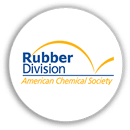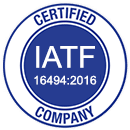ASTM D1053 Standard Test Method for Rubber Properties—Stiffening at Low Temperatures
ASTM D1053 is a widely used standard for evaluating the stiffening behavior of rubber materials when exposed to low temperatures. This test is critical for determining how rubber components perform in cold environments, ensuring that materials maintain their flexibility and functionality under freezing conditions.
Industries such as automotive, aerospace, and construction rely on ASTM D1053 to validate the performance of seals, gaskets, and other rubber products designed for low-temperature applications.
Scope of ASTM D1053
ASTM D1053 applies to:
- Materials Covered: Natural and synthetic rubbers, thermoplastic elastomers.
- Products Tested: Rubber seals, hoses, O-rings, and molded components.
- Test Conditions: Simulates real-world low-temperature scenarios.
This standard ensures that rubber products can withstand cold environments without losing their essential properties.
Purpose of ASTM D1053
The primary purpose of ASTM D1053 is to:
- Evaluate Low-Temperature Behavior: Assess how stiffness changes as the temperature drops.
- Ensure Product Reliability: Verify that rubber materials can perform as intended in extreme conditions.
- Support Material Development: Provide data for designing rubber compounds suitable for cold climates.
Key Concepts in ASTM D1053
- Stiffening: The increase in rigidity of rubber as it is exposed to lower temperatures.
- Flexibility at Low Temperatures: The ability of rubber to bend or deform without cracking.
- Glass Transition: A phase where rubber loses its elasticity and becomes brittle.
Equipment and Materials Used
Testing under ASTM D1053 requires:
- Test Apparatus: Includes fixtures to hold and apply stress to rubber samples.
- Environmental Chambers: Capable of reaching and maintaining precise low temperatures.
- Measurement Tools: Devices to measure stiffness, deflection, or cracking.
Test Procedure for ASTM D1053
The ASTM D1053 test involves these steps:
- Sample Preparation:
- Cut specimens to specified dimensions.
- Condition samples to ensure uniformity.
- Cooling Process:
- Place samples in an environmental chamber set to the desired low temperature.
- Allow sufficient time for thermal equilibrium.
- Measurement Techniques:
- Apply a standard load or deformation.
- Measure stiffness or other mechanical properties at the specified temperature.
Parameters Evaluated in ASTM D1053
- Stiffness Change: Quantifies the increase in rigidity as temperature decreases.
- Flexibility: Assesses the material’s ability to deform without failure.
- Dimensional Stability: Evaluates if the material maintains its shape under stress.
Factors Influencing Test Results
Several factors can affect the accuracy and reliability of ASTM D1053 results:
- Rubber Composition: The formulation of the material significantly impacts low-temperature performance.
- Cooling Rate: Rapid cooling can produce different results compared to gradual temperature decreases.
- Test Conditions: Variations in chamber temperature or sample handling can introduce inconsistencies.
Applications of ASTM D1053
ASTM D1053 is critical for:
- Automotive Parts: Evaluating the performance of rubber components in cold-weather vehicles.
- Seals and Gaskets: Ensuring reliable sealing in freezing conditions.
- Cold-Weather Products: Testing rubber materials used in outdoor and industrial applications.
Comparison with Other Standards
ASTM D1053 complements other standards, such as:
- ISO Standards for Low-Temperature Testing: Provides global benchmarks for similar evaluations.
- ASTM D2137: Focuses on brittleness testing, offering additional insights into material behavior.
Common Challenges and Solutions
- Accurate Temperature Control:
- Solution: Use calibrated environmental chambers with precise temperature settings.
- Preventing Sample Damage:
- Solution: Handle samples carefully to avoid introducing defects during preparation.
- Ensuring Repeatability:
- Solution: Follow standardized procedures and maintain consistent test conditions.
Case Studies Using ASTM D1053
- Automotive Seals:
- Tested seals for performance in sub-zero environments.
- Result: Improved material formulation, reducing seal failures.
- Industrial Hoses:
- Evaluated hoses for flexibility and durability in cold climates.
- Result: Enhanced product reliability, increasi








